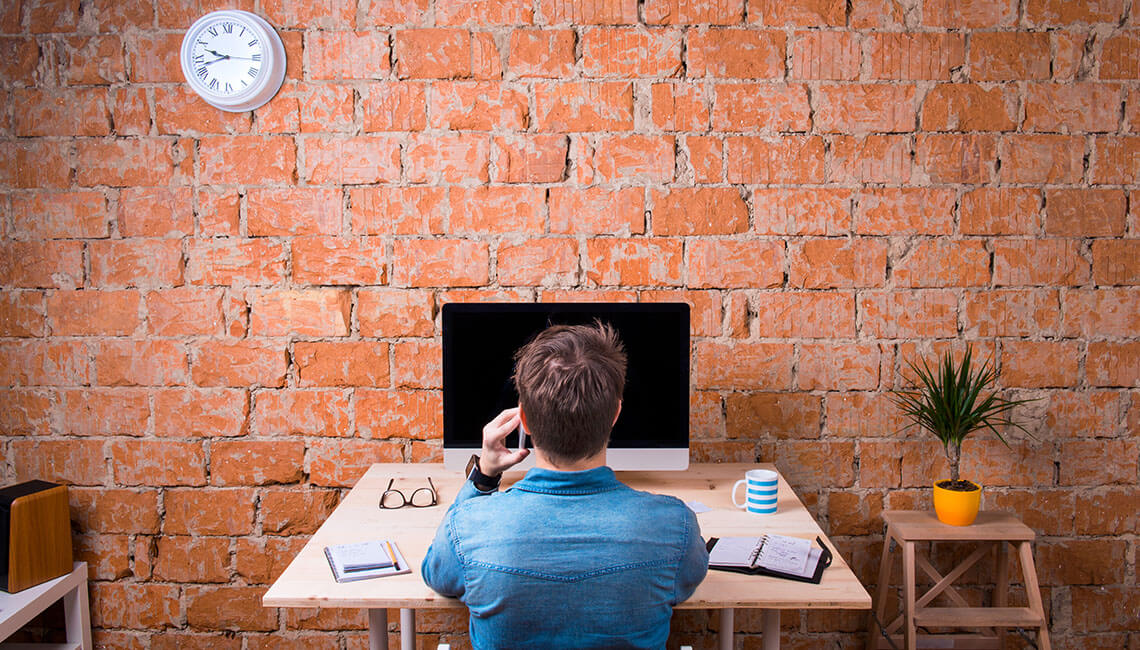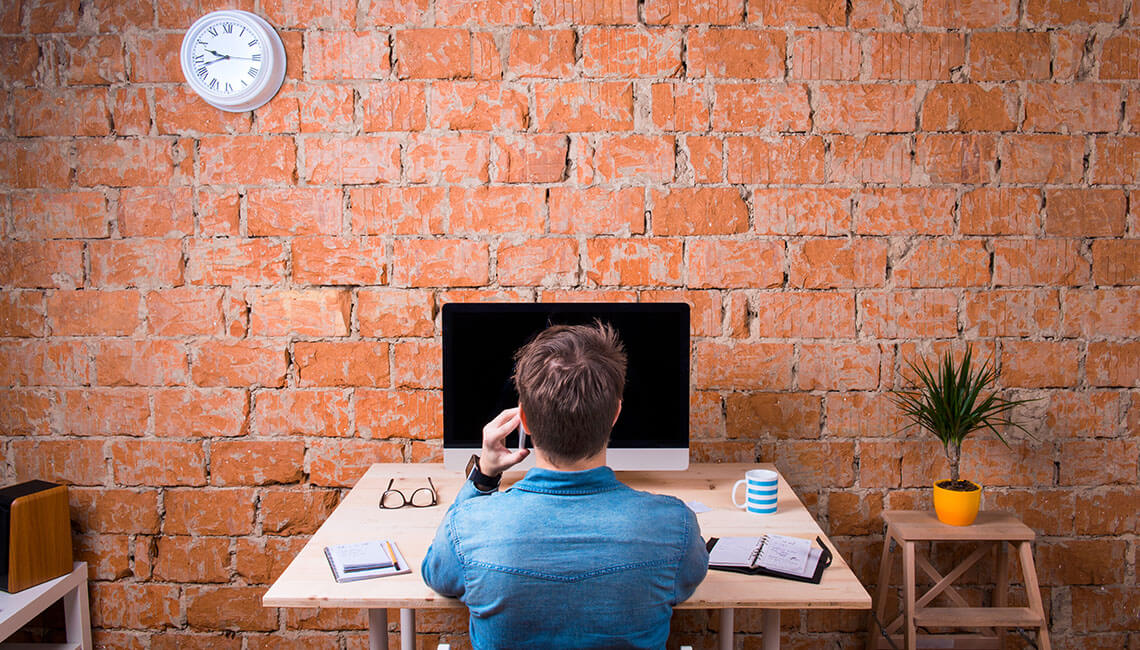Sitting… the silent killer of the American workforce? I bet you didn’t think of that one. “Sitting Disease” is the term used to describe 86% of Americans who sit every day at their job. In fact, you’re probably sitting, slouched over as you read this article. A lot of people worry about the obvious dangers in life and tend to be risk averse as a result, however, few people see why sitting could be considered a problem. However, it’s a HUGE problem! Did you know 300,000 people die annually due to inactivity and poor dietary habits in the United States alone? Research also shows that sedentary lifestyles are responsible for an estimated 24 billion in direct medical spending. That’s a lot of money.
NEW YOU caught up with Dr. Sled, Ph.D., NSCA and Dr. Shortt, Ed.D., CHES from Cedarville University for their thoughts on how crucial it is to be moving whether you’re at work, in class or Netflix binging at home.


NY: You use a standing desk, why did you switch to it in the first place?
Dr. Sled: I initially purchased a standing desk because of some discomfort in my lower back and overall stiffness with prolonged sitting.
Dr. Shortt: To clarify, I do not have a real standing desk. I’ve improvised one using boxes to try it out. I stretch more when I’m standing, and move more.
NY: Have you seen an improvement and if so, where?
DS: Yes! Periodically changing from a sitting to standing position when completing desk work has been very helpful for minimizing lower back discomfort and general stiffness. I have also noticed an added benefit of increased mental alertness when I work in a standing position.
DSH: My posture is better standing than when I am sitting, so my back doesn’t hurt as much. Having supportive shoes is essential—standing all day in heels is not advised! Standing can be hard on my legs though. I’d like to get an anti-fatigue mat to stand on. Also, putting one foot up on a box and then switching, also helps with back fatigue. In some reading I did (can’t remember the reference—probably SHAPE America newsletter), they found that for routine tasks, standing was fine, but for creative tasks, sometimes you need to sit. Also, I found that some days, I was too tired to stand the whole time (I was feeling all of my 63 years those days.)
NY: If you could substitute standing desks for sitting desks, would you?
DS: I would not recommend desks that only allow for standing. Working in a standing position for prolonged periods may lead to problems such as foot pain, swelling in the legs, varicose veins, muscular fatigue, and low back and neck pain. Varying postures and moving throughout the day are key. Therefore, I would recommend sit-to-stand workstations that allow for easy change of positions.
DSH: I’d like to have standing desks be the default option, especially in schools and workplaces. Kids benefit from standing during the day, both in reduced BMI and in improved behavior. Adults need to be active throughout the day and standing desks help. Standing desks should be combined with a high seat, though, so sitting is an option. Not everyone can stand all the time, nor is it necessary. The style of the desk should be matched to the user’s requirements. Sometimes you need to be able to look at a book or journal while typing and the desk surface should be wide enough to support it. I know that our department’s administrative assistant has a hi-lo adjustable desk that sits on her normal desk. She can raise it up to stand for a while and then lower it when she needs to sit. I like having that choice.
NY: How important is it to keep moving throughout the day from a physical therapy standpoint?


NY: What are your views regarding lengthy periods of sitting?
DS: College students sit for prolonged periods in classes and when studying. The seats in college classrooms, residence halls, and study rooms may not provide good back support. When students become more fatigued over the semester they tend to sit slouched in their chairs in class. Prolonged sitting promotes decreased mental alertness and focus, increased fatigue, and restlessness.
DSH: The main problem with sitting in college classrooms is ergonomic. The chairs are too low for tall people, and very short people like me have trouble putting feet flat on the floor. Added to this is the ergonomic challenge of laptop design, which encourages slouching posture. These challenges would be partially solved by stand-up desks of varying heights. That said, the movement really helps students stay awake in class!
NY: Do you believe you are just as productive standing as you are sitting?
DS: I find that I am more productive in standing, as I notice decreased muscle tension and fatigue and increased mental alertness when I change periodically to the standing position.
DSH: I think I am as productive standing as I am sitting, depending on my fatigue level that day.
NY: What are some suggestions to ease your workday?


DS: Whether you are sitting or standing at a desk, a neutral posture is important to prevent musculoskeletal problems. When your hands are placed on a keyboard, the forearms should be horizontal and the wrists should be in a neutral wrist posture. Computer monitors should be positioned with the top of the screen at eye level for a neutral neck posture. Items on a desk that you access regularly should be within arm’s reach.
There’s a lot of data out there, and clearly, a sedentary lifestyle is a problem. It isn’t just working adults who experience this widespread issue. The traditional school day is 6.8 hours according to the National Center for Education Statistics. Lunch, recess and gym class take at most two hours out of that time, which leaves 4.8 hours of sitting. Dr. Mark Benden, Ph.D., CPE at The Texas A&M University Health Science Center found that standing desks can slow the increase in elementary school children’s BMI (Body Mass Index) by an average of 5.24 percentile points. This particular study followed 193 students for a year and the students who they gave stand-biased desks for both years averaged a three percent drop in BMI, which measures obesity according to height and weight. In yet another study, Dr. Benden found “The students at stand-biased desks burned 15 percent more calories during the study period than students at traditional desks, and obese children at standing desks increased their calorie use by 25 percent.” Kids, college students, adults and older people are all affected by the sitting disease, no one can escape it unless you’re aware of it.
We have come up with just three reasons why sitting is killing you, and what you should do about it.


Hopefully, you’re up on your feet by now and if you aren’t, GET UP!
For more information regarding the “Sitting Disease” check out our other article Hot Seat: Warding off Sitting Disease. If you’re looking for a cool solution to this big problem, check out Surfing in the Workplace? Yes, it’s possible.












